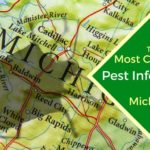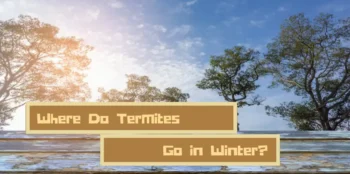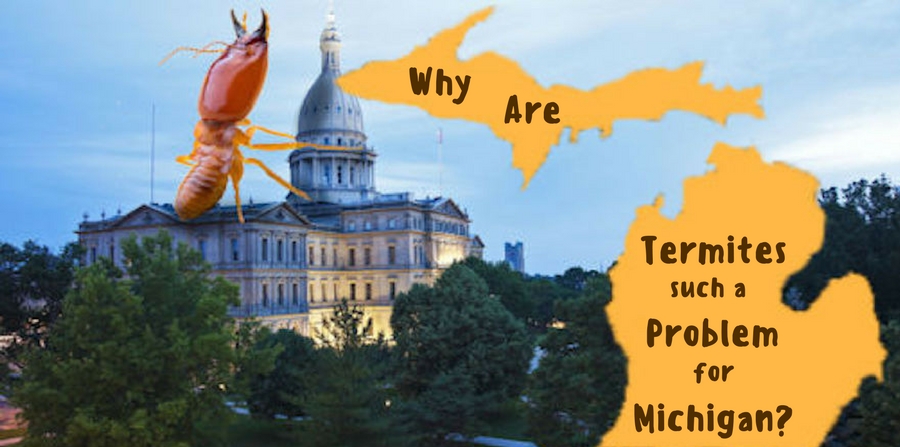
Termites, specifically the Eastern Subterranean Termite (Reticulitermes flavipes), are the most destructive wood pest in Michigan. Every year, they inflict thousands of dollars of property damage to Michigan homes all over the southern peninsula. Though they’re more common in wooded, rural areas of Michigan’s LP, they’re prevalent in cities like Ann Arbor, Detroit, and Grand Rapids, too.
In other words, we’re saying if you live anywhere in Michigan’s LP, you shouldn’t assume you can’t get termites. In fact, they’re one of the more common pest infestations that plague unassuming Michigan residents all year round. It turns out termites love Michigan almost as much as we do, so it’s safe to say they’re here to stay. Here’s what you should know about your less-than-welcome neighbor, and how to keep them away from your home.
What are termites?
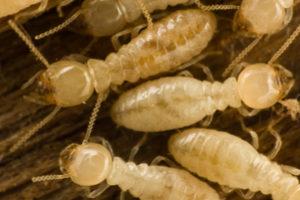 Termites are classified in the same insect order as cockroaches, Blattodea. Unlike cockroaches, however, termites are eusocial, which means they live together in large colonies. The Eastern Subterranean Termite is the most widely distributed, common, and economically significant wood-destroying insect in the United States. A single Eastern Subterranean Termite colony may consist of up to five million termites. Their “subterranean” designation means they build their colonies in tunnels underground.
Termites are classified in the same insect order as cockroaches, Blattodea. Unlike cockroaches, however, termites are eusocial, which means they live together in large colonies. The Eastern Subterranean Termite is the most widely distributed, common, and economically significant wood-destroying insect in the United States. A single Eastern Subterranean Termite colony may consist of up to five million termites. Their “subterranean” designation means they build their colonies in tunnels underground.
Within a termite colony, there are three castes: workers, soldiers, and reproductives. Each of these castes performs a different function and has different physical characteristics. Workers are small (3mm long), wingless, and translucent white. They’re the only caste that actually breaks down the wood and carries it back to the colony. Soldiers are larger than workers, with elongated yellow heads and large black jaws. They defend the colony in case of attack. Finally, the reproductives (including the queen) are ⅜-½ inches long, black or dark brown, and have translucent wings. They’re responsible for populating the colony and establishing new satellite colonies. Learn more about the types of termites and how to treat them here.
Where Did Termites in Michigan Come From?
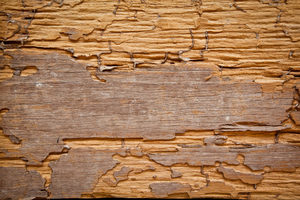 We don’t know for sure why or when termites originally came to Michigan. The Eastern Subterranean Termite was once native to warmer, southern climates like Texas and Florida. The pest has been gradually moving further north since at least the 1960s. Termites naturally expand their colonies to seek new sources of food and living space. They may also be transported in soil or infested wood. Some regions, such as Wisconsin, Toronto, and Ontario likely had their original populations transplanted one of these ways.
We don’t know for sure why or when termites originally came to Michigan. The Eastern Subterranean Termite was once native to warmer, southern climates like Texas and Florida. The pest has been gradually moving further north since at least the 1960s. Termites naturally expand their colonies to seek new sources of food and living space. They may also be transported in soil or infested wood. Some regions, such as Wisconsin, Toronto, and Ontario likely had their original populations transplanted one of these ways.
The Eastern Subterranean Termite is allowed to spread as quickly as it does because they can be frustratingly difficult to find. The most numerous caste, the workers, never leave the tunnels they build. Contrary to popular belief, winter doesn’t kill termites. The Eastern Subterranean Termites’ colony exists largely under the frost line. Workers can simply build tunnels straight from the colony to food sources and remain unaffected by freezing temperatures. If termites can’t access food in winter, they can go dormant until spring.
What Do Termites in Michigan Want?
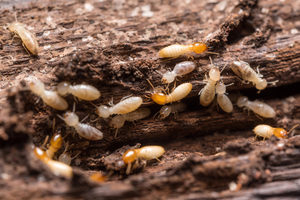 Termites feed on the cellulose found in materials like wood, paper, and cotton. Worker termites bore through wood to break it down into cellulose and carry it back to the colony. In the process, they create hollowed-out tunnels through their food sources. Termite colonies use these tunnels to access more food and expand their living quarters. Contrary to popular belief, termites can’t permanently live inside their wood-bored tunnels. Colonies require moisture to survive, so they have to periodically return to a water source such as soil.
Termites feed on the cellulose found in materials like wood, paper, and cotton. Worker termites bore through wood to break it down into cellulose and carry it back to the colony. In the process, they create hollowed-out tunnels through their food sources. Termite colonies use these tunnels to access more food and expand their living quarters. Contrary to popular belief, termites can’t permanently live inside their wood-bored tunnels. Colonies require moisture to survive, so they have to periodically return to a water source such as soil.
The colonies’ need for moisture drives their search for food, as well. Termites can bore through and consume most types of wood, but they’re particularly attracted to moist wood. Wooden structures that are wet or in humid locations are ideal food sources for termites. The harder or more structurally sound a wood product, the more energy termites need to expend to bore into it. For this reason they also seek out damaged wood before structurally-sound wood.
How to Prevent Termites in Michigan
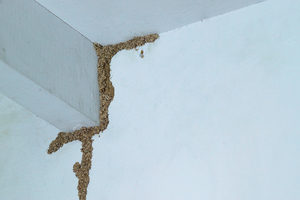 Termites infest wood that’s moist, damaged, or readily accessible. Keeping them out means making sure the wood in your home is none of those things. Start by looking for plumbing leaks, condensation, puddling, or excess humidity. Pay special attention to your basement, because most infestations start there. Find and patch up drafts, ensure proper ventilation, and consider investing in a dehumidifier. At the same time, look for any cracks or gaps in your foundation or in wooden structures.
Termites infest wood that’s moist, damaged, or readily accessible. Keeping them out means making sure the wood in your home is none of those things. Start by looking for plumbing leaks, condensation, puddling, or excess humidity. Pay special attention to your basement, because most infestations start there. Find and patch up drafts, ensure proper ventilation, and consider investing in a dehumidifier. At the same time, look for any cracks or gaps in your foundation or in wooden structures.
Termites can build “tubes” along sheer surfaces to get at elevated wood. Even with these tubes, however, they can’t access wood much higher than 18 inches off the ground. Wherever possible, make sure wooden structures aren’t contacting the ground directly. Consider wrapping deck or porch pillars in hard plastic wrap. Protect wooden foundation with a similar barrier or other form of deferral. Whenever possible, prevent excess moisture buildup in your yard from puddles or inadequate drainage.
Termites infestations won’t knock your house down overnight, but they can do more damage quicker than you’d think. Termite damage can get expensive or even dangerous, so learning to prevent them is essential.
If you think you have a termite infestation, don’t wait; contact Griffin for termite treatment in Michigan today. Our experts have the skill, know-how, and tools to solve any termite problem quickly and permanently.
[cta heading=”Michigan’s Solution to Termite Problems” copy=”If your home or business is in Michigan and you have a termite problem, Griffin is your solution. We’ll wipe out your infestation for good… no ifs, ants, or bugs! “]

